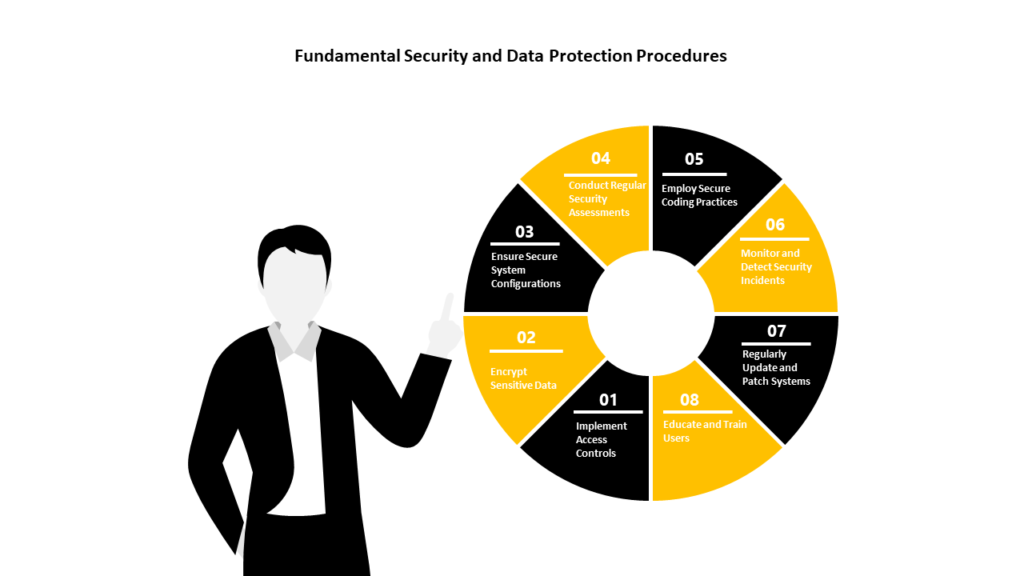For businesses conducting SAP custom development projects in the modern digital environment, data security, and privacy are high objectives. To safeguard sensitive data and maintain regulatory compliance, robust security measures are necessary due to the increasing volume and sensitivity of data processed by SAP systems. In this post, we’ll look at the importance of securing SAP custom development and discuss the fundamental security and data protection procedures that organizations should adhere to.

1. Implement Access Controls:
Access controls form the foundation of data protection in SAP custom development. Establish a robust user management system that ensures proper authentication, authorization, and segregation of duties. Limit user access privileges to only what is necessary for their roles and responsibilities. Regularly review and update user access permissions to prevent unauthorized access and mitigate potential security risks.
2. Encrypt Sensitive Data:
Encryption is a crucial measure to protect sensitive data within SAP systems. Implement encryption protocols to secure data at rest and data in transit. Leverage industry-standard encryption algorithms and secure key management practices. Encrypt databases, backups, and communication channels to protect sensitive information from unauthorized access or interception.
3. Ensure Secure System Configurations:
Proper system configuration is essential for maintaining the security of SAP custom development environments. Regularly review and update system configurations to adhere to security best practices. Implement secure network architecture, firewall rules, and intrusion detection systems to prevent unauthorized access and network breaches. Disable unnecessary services and protocols to minimize attack surfaces.
4. Conduct Regular Security Assessments:
Regular security assessments and audits help identify vulnerabilities and weaknesses within SAP custom development environments. Perform penetration testing, vulnerability scanning, and code reviews to identify and address security gaps. Engage external security experts or leverage internal security teams to ensure comprehensive assessments. Regular assessments provide insights into potential security risks and enable proactive mitigation.
5. Employ Secure Coding Practices:
Adopting secure coding practices is vital in SAP custom development to mitigate potential vulnerabilities and minimize the risk of exploitation. Train developers on secure coding principles and best practices. Utilize secure coding guidelines, standards, and frameworks, such as OWASP (Open Web Application Security Project). Regularly conduct code reviews to identify and remediate security-related issues.
6. Monitor and Detect Security Incidents:
Implement reliable security incident detection and monitoring systems in SAP custom development environments. To identify and respond to security incidents in real-time, use security information and event management (SIEM) systems. Set up warnings and alerts for shady behavior, unauthorized access attempts, and data breaches. Create an incident response strategy to guarantee prompt and efficient responses to security incidents.
7. Regularly Update and Patch Systems:
It is essential to keep SAP systems and related components up to date with the most recent security patches and updates. Follow SAP’s security patch updates to patch any known vulnerabilities regularly. Implement a methodical patch management procedure to guarantee timely update distribution. Regular system updates assist in maintaining the security of SAP custom development environments and defending against new threats.
8. Educate and Train Users:
User awareness and training are essential for maintaining a strong security posture. Educate users, including developers, administrators, and end-users, on security best practices, policies, and procedures. Regularly conduct security awareness training to promote a culture of security-conscious behavior. Encourage users to report potential security incidents or vulnerabilities promptly.
Securing SAP custom development is a critical aspect of maintaining the integrity, confidentiality, and availability of data within SAP systems. By implementing access controls, encrypting sensitive data, ensuring secure system configurations, conducting regular security assessments, and employing secure coding practices, organizations can significantly enhance their security posture. Additionally, monitoring and detecting security incidents, regularly updating and patching systems, and educating users contribute to a robust security framework. By prioritizing data protection and security measures, organizations can safeguard their SAP custom development environments and protect valuable information from unauthorized access and breaches.

Looking for expertise and excellent know-how in matters of business technologies?
Jaideep Sharma
Associate Partner -Technical Delivery

